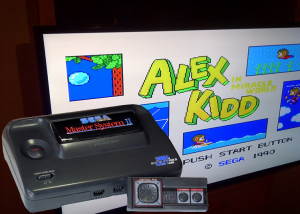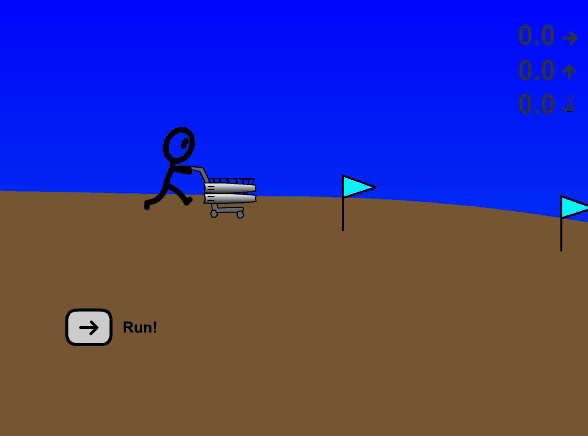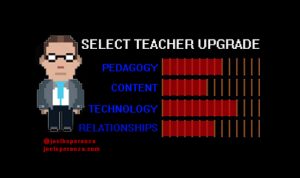It’s school holidays here in Brisbane. This means I can indulge in a few of my guilty pleasures. It’s difficult to admit but one of these is computer games.
Now you need to understand, I was born in the early 80s. I lived through the golden era of console gaming. Atari, Nintendo, Sega, I loved them all.
The games I play now aren’t the serious games that the kids of today play. Instead, I tend to play silly little browser-based games on my computer, just 5 minutes here or there.
One particular genre of game I like to play are “Upgrade games”. Example: Shopping Cart Hero.
Once you’ve launched your Shopping Cart and earned money for your efforts, it’s time for the “Upgrade screen” (and the point of this blog post)
Upgrade wheels, Rockets, Passengers and learn tricks. Once you’ve upgraded a little bit, you can do this.
What about Teaching?
Don’t worry, it’s still an education blog. But of course all these upgrade games made me wonder. What would the Teacher Upgrades screen look like?
What I’ve learned from Upgrade Games
Know Your Current Upgrades
With an upgrade game, You’ve always got an accurate account of what your current attributes are. Look at the screen, there they are, displayed.
As a teacher it’s not so easy. We need to look within ourselves, reflect and decide what the true state of play is. Which of our 4 attributes is the strongest? Which could use some improvement?
For what it’s worth, the image above displays what I believe my current “state of upgrade” is.
Prioritise Upgrades
Upgrade games are a difficult balancing act. On each turn you enter the upgrade screen and select your upgrade. But usually you can only upgrade one attribute at a time.
And so it is with teaching. If we truly want to improve, it’s not enough to say “I want to be a better teacher”. We need to really think about it and say, “I want to improve my relationships with my students”. Then we need to make a plan for making that particular upgrade happen.
Unfortunately we can’t just “buy” upgrades like a computer game. We need to earn them.
Beware Upgrade Stacking
It’s tempting in an upgrade game to “stack” an upgrade. This means growing one attribute much faster than all of the others. In a well designed upgrade game though, the best strategy is to upgrade evenly. All your attributes should grow at about the same pace. This is almost always the fastest way to progress through the game.
But I believe we often rely on “upgrade stacking” as teachers. I’m a “tech guy”, so I tend to focus on opportunities for improving my knowledge of technology. This is a strange bit of thinking isn’t it? My “upgrade screen” clearly shows my tech upgrade is the highest of the four. I should focus on one of my other three attributes.
Early Upgrades are Cheap
In these games, as you upgrade a particular attribute it becomes more expensive to upgrade that particular attribute.
For example, let’s say you’re already a 8/10 on your content knowledge. It’s going to be very difficult to get to 9/10. You might need to go back to university for further study.
But if your content knowledge is a 2/10 (let’s say you’re teaching outside your area) The upgrade to 3/10 isn’t difficult at all. Read a textbook, talk to a colleague or spend some time browsing youtube. What I’m trying to say is, Pick the low hanging fruit.

In a Nutshell
Learning comes from the strangest places. Shopping cart hero has helped me see my teaching in a new light.
- Know your current upgrade status
- Prioritise your next upgrade
- Beware “Upgrade Stacking”
- Early upgrades are cheap, pick the low hanging fruit
What will your next upgrade be?




